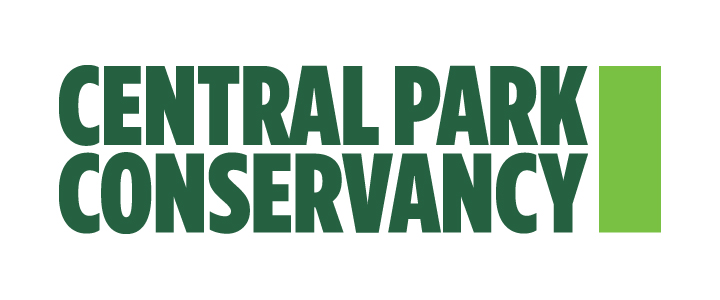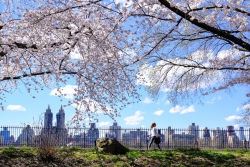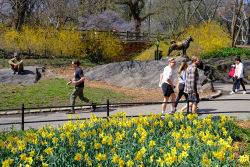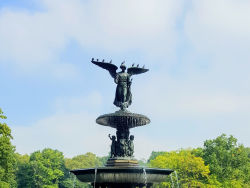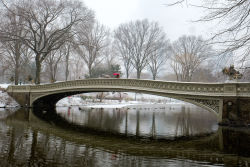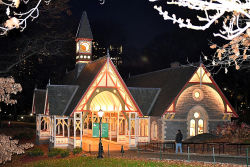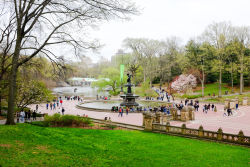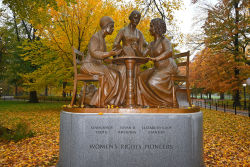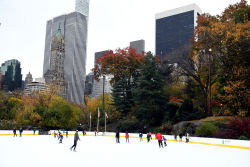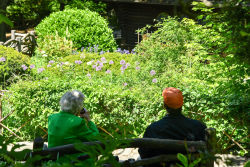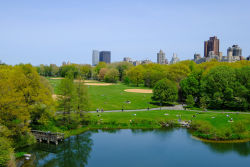Central Park
Great Hill
At 135 feet above sea level, Great Hill is one of the highest points in Central Park. It is part of a chain of rock outcrops that stretches across the park at 106th Street, an area that was originally part of the town of Harlem. In the 18th and early 19th centuries, Great Hill was called Mount Prospect because it offered unobstructed views of the Hudson River, then known as the North River. The hill provided an excellent place to protect Manhattan from a western attack during the Revolutionary War (1776-1783). Evidence of British and Hessian military encampments, such as pot hooks, bayonets, and even sod breastwork walls, surfaced while the park was under construction in the 1860s.
When the Board of Commissioners of Central Park held the park design competition in 1858, their rules stipulated that each entry include an observation tower. The winners, Frederick Law Olmsted (1822-1903) and Calvert Vaux (1824-1895), initially chose to put their tower on Great Hill. The tower was never built. Instead, they redesigned Great Hill as a northern destination for visits by horse carriage, offering cool breezes and beautiful views.
In the 1940s, Parks Commissioner Robert Moses (1888-1981) turned Great Hill into a recreation area with tennis, horseshoe, and volleyball courts, as well as an oval track. Aside from the public restroom, the track is the only original feature that remains. In 1985, the Central Park Conservancy, a non-profit agency which co-manages Central Park along with Parks, restored the area as the green lawn of Olmsted and Vaux's design. The Conservancy replanted the woodland edge, and reconstructed the steps and paths leading down to the pool, using the 1858 plan as their guide.
Check out your park's Vital Signs
Clean & Safe
Green & Resilient
Empowered & Engaged Users
Share your feedback or learn more about how this park is part of a
Vital Park System
Contacts
Central Park Information: (212) 310-6600
Central Park Information (for the Hearing Impaired): (800) 281-5722
Belvedere Castle, The Henry Luce Nature Observatory: (212) 772-0210
The Charles A. Dana Discovery Center: (212) 860-1370
The Dairy Visitor Center and Gift Shop: (212) 794-6564
North Meadow Recreation Center: (212) 348-4867
Loeb Boathouse (Bike rentals, boat rentals & gondolas): (212) 517-2233
Carousel: (212) 879-0244
Fishing at Harlem Meer (Catch & Release): (212) 860-1370
Harlem Meer Performance Festival: (212) 860-1370
Horseback Riding - Claremont Stables: (212) 724-5100
Metropolitan Opera (Performances on the Great Lawn): (212) 362-6000
New York Philharmonic (Performances on the Great Lawn): (212) 875-5709
Shakespeare in the Park - The Public Theater at the Delacorte Theater: (212) 539-8655
Central Park SummerStage: (212) 360-2777
Swedish Cottage Marionette Theater: (212) 988-9093
Tennis: (212) 280-0205
Weddings, Ceremonies and Photography at the Conservatory Garden: (212) 360-2766
Wildlife Center & Tisch Children's Zoo: (212) 439-6500

